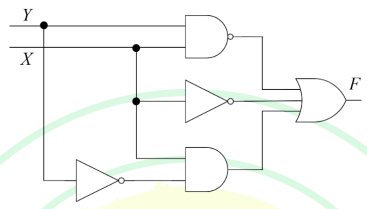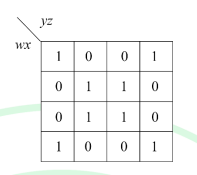CS/IT Gate Yearwise
CS/IT Gate 2025 (Set 2)
CS/IT Gate 2024 (Set 1)
CS/IT Gate 2024 (Set 2)
CS/IT Gate 2023
CS/IT Gate 2022
CS/IT Gate 2021 (Set 1)
CS/IT Gate 2021 (Set 2)
CS/IT Gate 2020
CS/IT Gate 2019
CS/IT Gate 2018
CS/IT Gate 2017 (Set 1)
CS/IT Gate 2017 (Set 2)
CS/IT Gate 2016 (Set 1)
CS/IT Gate 2016 (Set 2)
CS/IT Gate 2015 (Set 1)
CS/IT Gate 2015 (Set 2)
CS/IT Gate 2015 (Set 3)
CS/IT Gate 2014 (Set 1)
CS/IT Gate 2014 (Set 2)
CS/IT Gate 2014 (Set 3)
CS and IT GATE 2025 SET-2 Questions with Answer
Ques 27 Databases
Consider the following relational schema along with all the functional dependencies that hold on them.
R1(A,B,C,D,E):{D→E,EA→B,EB→C}
R2(A,B,C,D):{A→D,A→B,C→A}
Which of the following statement(s) is/are TRUE?
Ques 28 Databases
Consider the database transactions T1 and T2, and data items X and Y. Which of the schedule(s) is/are conflict serializable?

Ques 29 Databases
Consider the following relational schema:
Students (rollno: integer, name: string, age: integer, cgpa: real)
Courses (courseno: integer, cname: string, credits: integer)
Enrolled (rollno: integer, courseno: integer, grade: string)
Which of the following options is/are correct SQL query/queries to retrieve the names of the students enrolled in course number (i.e., courseno) 1470?
Ques 30 Databases
In a B+ tree where each node can hold at most four key values, a root to leaf path consists of the following nodes: A=(49,77,83,-), B=(7,19,33,44), C=(20*,22*,25*,26*)
*-marked keys signify that these are data entries in a leaf. Assume that a pointer between keys k1 and k2 points to a subtree containing keys in [k1,k2), and that when a leaf is created, the smallest key in it is copied up into its parent.
The record with key value 23 is inserted into the B+ tree.
The smallest key value in the parent of the leaf that contains 25* is ______ (Answer in integer)
Ques 31 Digital Logic
Consider the following logic circuit diagram.

Ques 32 Digital Logic
In a 4-bit ripple counter, if the period of the waveform at the last flip-flop is 64 microseconds, then the frequency of the ripple counter in kHz is ______ (Answer in integer)
Ques 33 Digital Logic
Given the following Karnaugh Map for a Boolean function F(w,x,y,z):

Ques 34 Digital Logic
Which of the following Boolean algebraic equation(s) is/are CORRECT?
Ques 35 Discrete Mathematics
Let P(x) be an arbitrary predicate over the domain of natural numbers.
Which ONE of the following statements is TRUE?
Ques 36 Engineering Mathematics
If  then which ONE of the following is A8?
then which ONE of the following is A8?
Ques 37 Engineering Mathematics
The value of x such that x>1 satisfying the equation ∫1xt ln t dt=1/4 is
Ques 38 Engineering Mathematics
Let L, M, and N be non-singular matrices of order 3 satisfying the equations
L2=L-1, M=L8 and N=L2.
Which ONE of the following is the value of the determinant of (M-N)?
Ques 39 Engineering Mathematics
Consider a system of linear equations PX=Q where P∈ℜ3×3 and Q∈ℜ3×1. Suppose P has an LU decomposition, P=LU where

Which of the following statement(s) is/are TRUE?

Total Unique Visitors